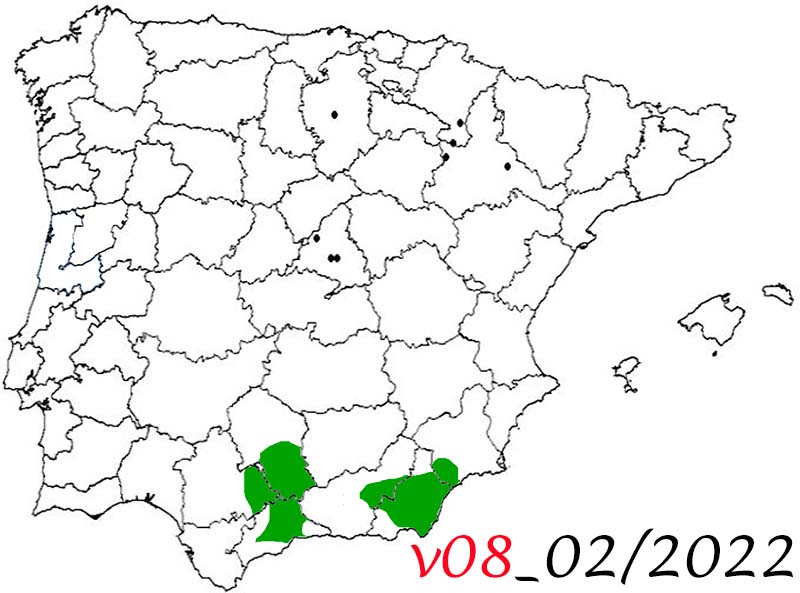


8. Trip to the South of Spain
8. Trip to the South of Spain
February 25 to March 7, 2022
Day 4, crossing the province of Seville to reach Ronda
February 28, 2022
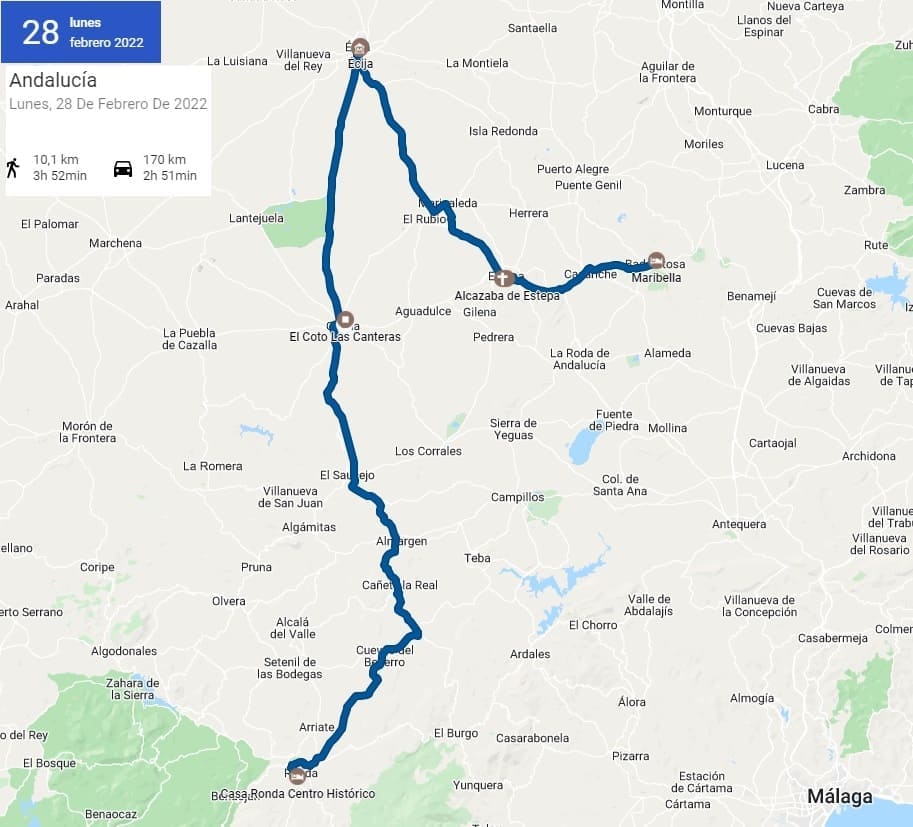


132. Estepa
132. Estepa
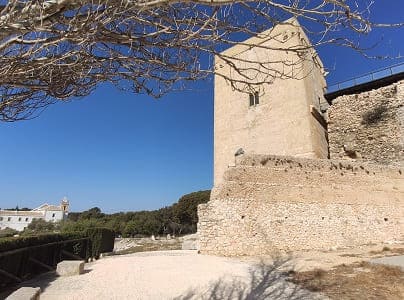
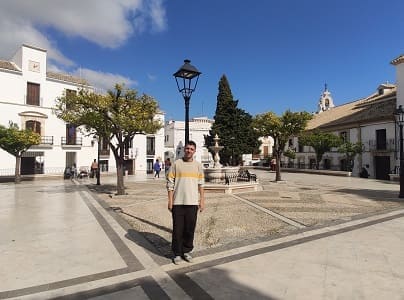
After seeing a large part of the province of Córdoba (being the north of the province) my intention was to visit the towns of Málaga and especially Ronda. To do this, he would cross the east of the province of Seville and visit several of its towns where he had never been.
The first of these towns is Estepa. This town is known for its polvorones, since it is the queen brand of Spain and all of us Spaniards have eaten them at some time. I went up to the top of the town to see its castle or what was left of it. Very close is the convent of San Francisco, which was closed, and the church of Santa Clara. This church is very old, possibly some construction existed prior to the founding of the convent in the 16th century.
What really surprised me about this town is the quality of its churches. The church of Nuestra Señora de la Asunción and the church of El Carmen stand out.
Of the Church of the Assumption, the profuse eighteenth-century pictorial decoration of its interior stands out, whose compositional scheme revolves around the life of the virgin. with a singular baroque structure known as a tower-camarín, built around the year 1716. The space is presided over by the image of Our Lady of the Assumption, patron saint of the town, a work that can be dated in the course of the 17th century.
The main altarpiece is from the year 1749, and is related to the workshop of González Cañero, from the ecijana school. Diego Márquez designed the altarpiece of the San Pedro chapel, where the image of the Santísimo Cristo de las Penas stands out, a work from the 16th century, the Virgen de los Servitas, from the 17th century and an image of Saint Peter the Apostle. The most beautiful thing is the vault with its different frescoes attributable to workshops in Madrid, and those in the nave to the Sevillian school. Therefore, it can be said that the variety of artists and schools make it a unique work of Andalusian religious architecture.
The Church of Carmen was founded on the old hermitage of Cristo de la Sangre, which dated back to the 16th century. Even today it is possible to see some Gothic-Mudejar details belonging to the previous building. Its construction, with the exception of the previous buttresses, dates from the 17th century; although its interesting and elaborate Baroque decoration corresponds to the 18th century. The Marquises of Estepa used the crypt of this temple for several centuries as a noble pantheon.
Other more common churches are that of San Sebastian. Above all the church towers rises the Tower of Victory. This tower was part of an old convent that suffered the effects of the French invasion and the confiscation. Due to the state it was in, it would eventually be destroyed, but the tower was not touched and it is the one that remains today.
Then I moved to see Écija to the northeast.


133. Écija
133. Écija
Then I moved to see
Ecija to the northeast. This town is one of the most important in Seville, both for its population and its history. Écija was one of the most important towns in Roman times and there are numerous ruins and vestiges that speak for themselves.
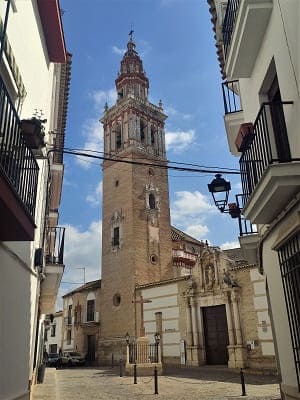 The Benameji Palace
The Benameji Palace houses a museum with objects from all the surrounding towns. Its patio and its stairs are very beautiful, and it has very large mosaic floors that could well compete with those of the Mérida museum. From the same period is a Roman pond found in the town hall square. In the square, the Benameji viewpoint and the viewpoint house of the Silk Guild stand out, which were used to observe the festivities by the Marquis of Benameji. The square is very wide and you can see some religious buildings apart from the town hall which, when I was there, was being restored.
Those buildings are
the church of Santa María, that of San Juan and that of Santa Ana and the convent of the Sacred Heart of Jesus. Very close to this square we find
the church of San Gil of great proportions.
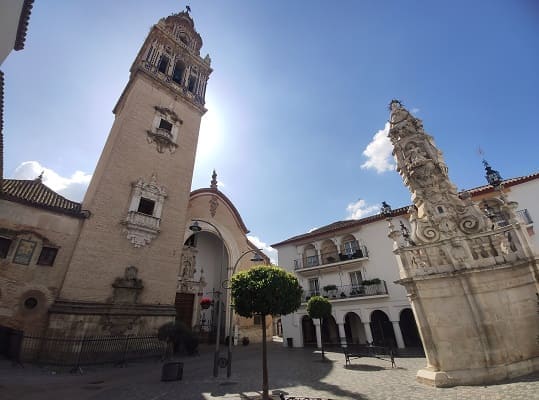
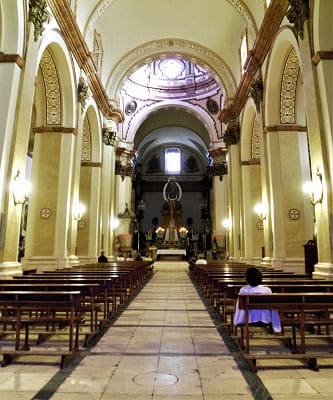
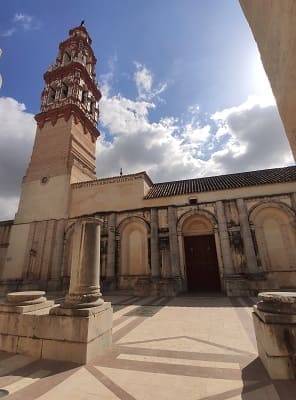
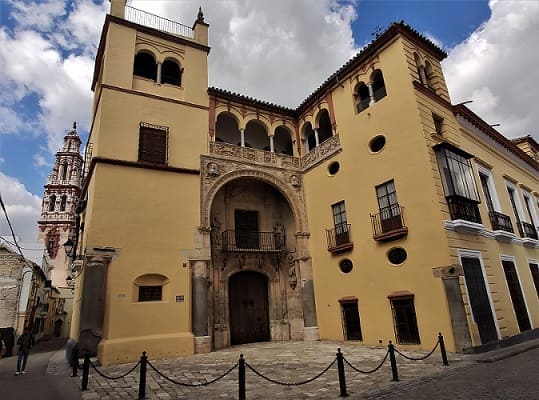
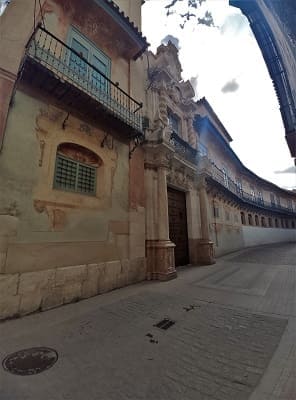
Écija cuenta con palacios muy bonitos como
el palacio de Peñaflor con un gran patio y
el palacio de Valdehermoso, que tiene una portada renacentista y unos balcones preciosos. El palacio de Valdehermoso
The Peñaflor palace was built from a series of houses from the early 16th century. These would be expanded and would undergo different changes. Together they would form this palace. Most of the part that can be visited dates back to the 18th century. Different renowned Sevillian architects would work in the area. It was the residence of the Peñaflor family until the Marchioness died in 1958. In her will, she expressed the wish that it be converted into a professional and religious school. It is currently the headquarters of the foundation and municipal library.
Behind it is
the tower of the church of San Juan, in the Mudejar style, with an air of several from Estepa or some from Jerez de los Caballeros in Badajoz.
Finally, I would go towards the river to reach the largest park in Ecija,
the San Pablo park that can be seen in the image.
Nearby are other palaces such as
the Palace of Bobadilla or the Palace of Lasso Vega.
At noon I would look for a restaurant and eat in the Sevilla brotherhood next to the church of Santa Cruz. A large square with a very large church. Nearby is
the church of San Pablo and Santo Domingo, one of the most valuable baroque churches in the city and in the area. Another church to visit is the
Convent of the Immaculate Conception and the Convent of the Holy Trinity.
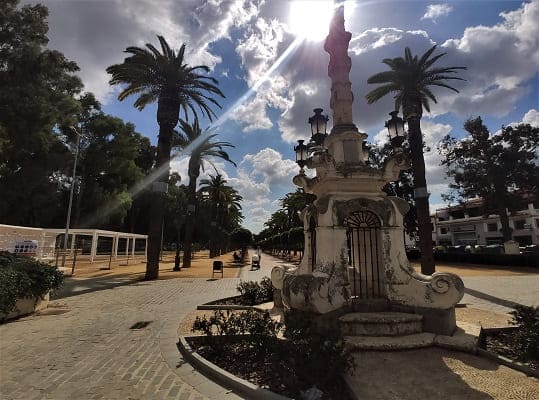
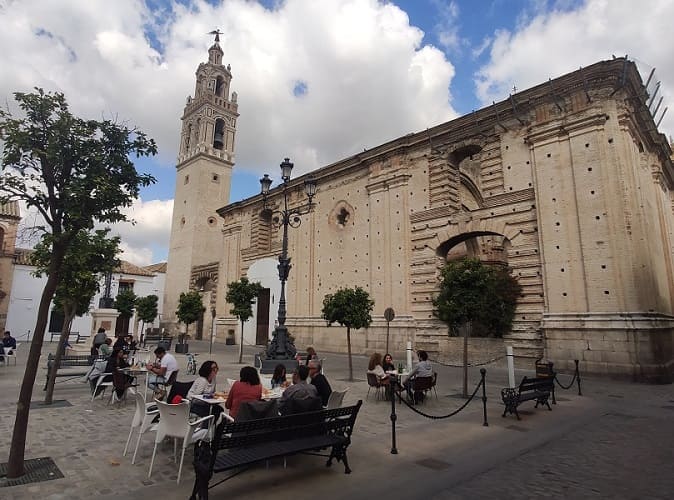
Other palaces are the Cárdenas and Prados Castellano palace, the Santaella palace, the Justica palace also called the Tomasas house, the Garcilaso palace and the Águilas palace.
With all this, Écija's heritage is enormous, and although they say that Carmona or Osuna are the cities with the most heritage after Seville, in my opinion Écija is the second city with the most heritage after Seville.
Having visited Écija in a record time of 5 or 6 hours, I went down to see
Osuna.


134. Osuna
134. Osuna
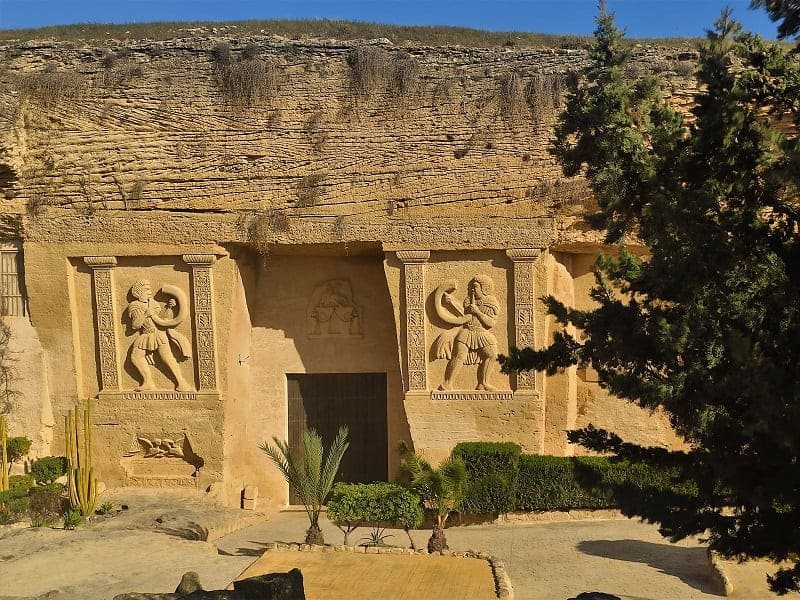
Having visited Écija in a record time of 5 or 6 hours, I went down to see
Osuna. I arrived around 5:00 p.m. and the first thing I saw was the
Coto de las Canteras. It is an extensive area where the rock was obtained to make most of the buildings in Osuna since Roman times. Today they have transformed the relief of the walls making figures of people or animals and cleaning the interior to hold events. They have also created a museum and some compare it to Petra because of its reddish color and the figures they have created, all of which are recent.
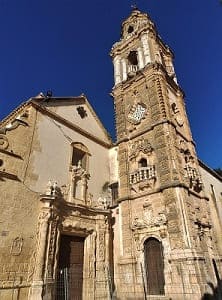
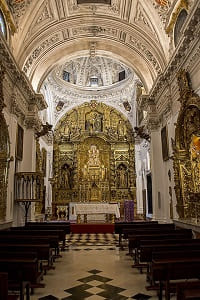
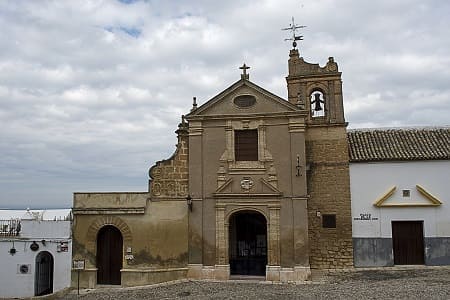
Then he would try to enter the Collegiate Church, passing by the
La Merced Church and its tower, with the characteristics of the Sevillian Baroque from the mid-17th century. It is one of the most beautiful towers in the province, along with others already seen such as the Victoria de Estepa or several of the churches in Ecija.
Before reaching the collegiate church, we find ourselves in the same square as the Monastery of La Encarnación. The building was built in 1549 as the Hospital of the Incarnation of the Son of God. At the beginning of the 17th century, it served as a school for the Society of Jesus, which was later moved to the church of San Carlos El Real, to be transformed, in 1626, into a monastery for Mercedarian nuns under the patronage of Catalina Enríquez de Ribera, Duchess of Osuna. .
The last guided tour was at 5:45 p.m., so I could not enter the collegiate church.
The collegiate church of Nuestra Señora de la Asunción de Osuna was built at the end of the 15th century. It would be built on the old fortress that dominated the city at the time of the reconquest. From it you can see the whole city. It is made with ashlars from the surrounding quarries and due to the properties of the materials it has given rise to humidity problems over the years and has required several restorations. Outside, the Puerta del Sol stands out, in which there are several Catholic symbols and inscriptions. The church is very spacious and different artists such as Jose de Ribera, Luis de Morales, etc. have worked in it. It alternates elements of Gothic and Renaissance styles. There are different chapels such as the Mayor chapel, the Tabernacle chapel and the Immaculate Conception chapel, in baroque style.
If there is something that makes it different from other collegiate churches, it is its patio with different frescoes and reliefs, in the Renaissance style, and its Ducal chapel, also called the Pantheon chapel. It is one of the most outstanding monuments of the Andalusian Renaissance. It is very spacious with three large naves and different altarpieces of very high quality, in which a terracotta relief of San Jerónimo Penitente and different paintings stand out. In the Pantheon is the Holy Sepulchre. It also has a coffered ceiling decorated with different details in gold leaf. Very close is the sacristy and the museum. This place has also been chosen to film some scenes of the well-known series
Game of Thrones.
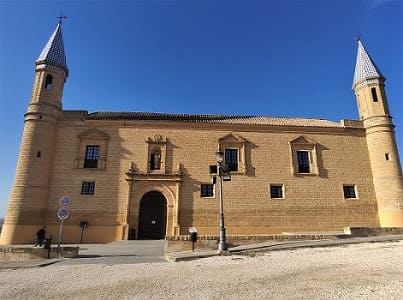
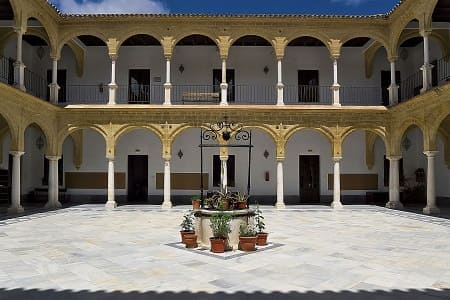
Not far away is
the University of Osuna, which you can enter to see its patio. The university is one of the oldest in Spain, built in the 16th century. It is a simple rectangular building with a square courtyard. The chapel inside and the Girona room stand out. This room contains different paintings of great importance.
Other buildings of interest in Osuna are
the palace of Miguel Reina Jurado, the Cepeda palace with its beautiful coat of arms or
the palace of the Marquis of Gomera, with a large patio today converted into a hotel.
Other religious buildings include
the church of San Agustin, the church of Santo Domingo, which is huge, the convent of Nuestra Señora del Carmen and the convent of San Carlos el Real. They are of baroque style, and of them the one of Santo Domingo stands out for its dimensions. This was one of the most important and had a large Mudejar coffered ceiling that has disappeared. The Carmen convent is also quite large and has a church with a beautiful Baroque altarpiece.
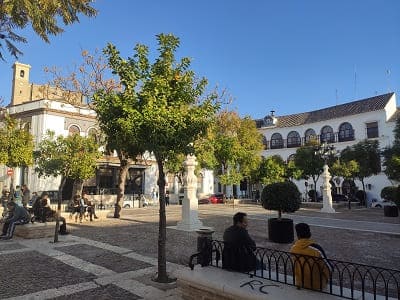
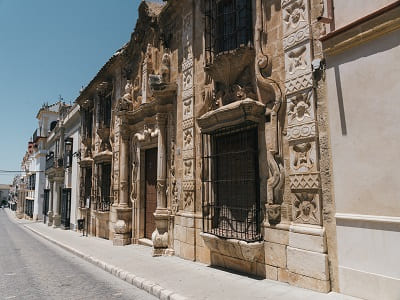
Other important buildings are
the municipal pósito or the collegiate council hall which has the most spectacular baroque façade in the province of Seville, which can be seen in the image on the right. The cover, off-center, stands out for its almost sculptural entity; It is framed by Corinthian columns that start from bulbous pedestals and support a highly cut mixtilinear cornice, with a wavy bead around the lintel. On the cornice rises the sculptural representation in a round shape of the Giralda, Santas Justa and Rufina and the jars of lilies, surrounded by another mixtilinear molding and crowning the whole with a very cut finial as a pediment.
With all this we can say that Osuna is one of the most monumental cities in Seville, only behind Ecija and Carmona. Its importance is due to the arrival of Pedro Téllez de Girón, very close to the monarch Felipe II who would give him the family title of Duke of Osuna. During this period, thirteen churches and convents, a hospital, the University, the Collegiate Church and the Ducal Sepulcher would be built. Over the centuries the family would become one of the most influential in Spain with various properties throughout the peninsular geography.
With this he would go straight to Ronda where he had the hostel.
Churches of Santa María la Mayor x.XIII, Nuestra Señora de la Asunción, del Carmen and de los Remedios, s.XVI.
10
Main Square and Church of Santa María, s.XVIII.
11
Main square, Collegiate Church from the 16th century and Coto de las Canteras.
12
Day 5, visit to the province of Malaga (CLICK to continue)
March 1, 2022
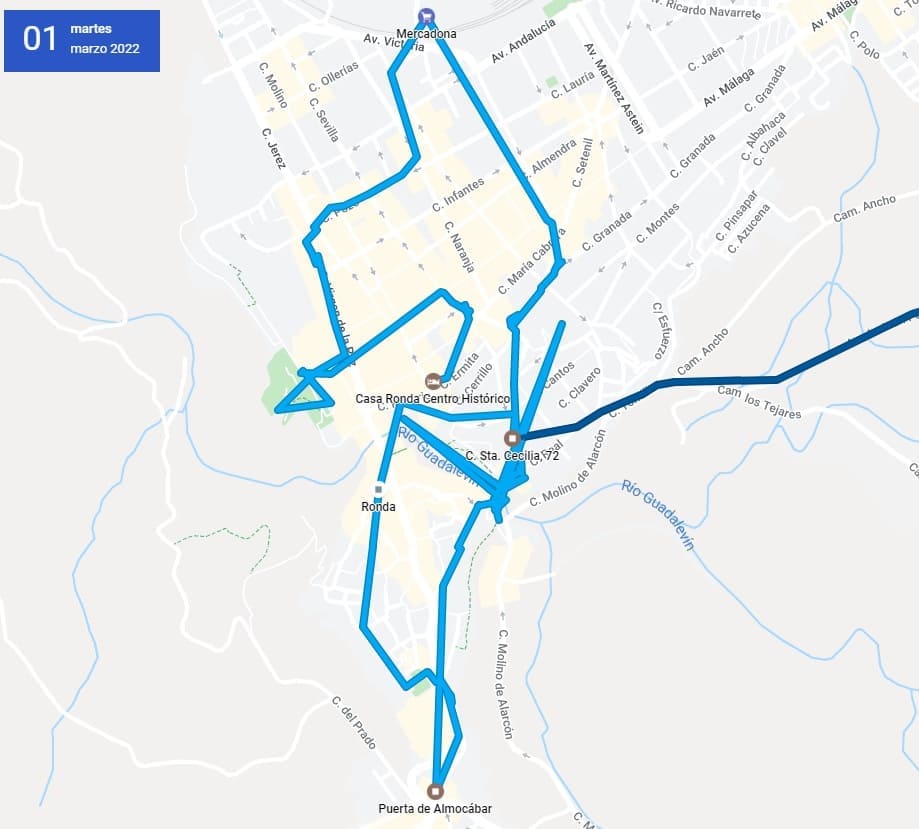















 Écija cuenta con palacios muy bonitos como el palacio de Peñaflor con un gran patio y el palacio de Valdehermoso, que tiene una portada renacentista y unos balcones preciosos. El palacio de Valdehermoso
The Peñaflor palace was built from a series of houses from the early 16th century. These would be expanded and would undergo different changes. Together they would form this palace. Most of the part that can be visited dates back to the 18th century. Different renowned Sevillian architects would work in the area. It was the residence of the Peñaflor family until the Marchioness died in 1958. In her will, she expressed the wish that it be converted into a professional and religious school. It is currently the headquarters of the foundation and municipal library.
Écija cuenta con palacios muy bonitos como el palacio de Peñaflor con un gran patio y el palacio de Valdehermoso, que tiene una portada renacentista y unos balcones preciosos. El palacio de Valdehermoso
The Peñaflor palace was built from a series of houses from the early 16th century. These would be expanded and would undergo different changes. Together they would form this palace. Most of the part that can be visited dates back to the 18th century. Different renowned Sevillian architects would work in the area. It was the residence of the Peñaflor family until the Marchioness died in 1958. In her will, she expressed the wish that it be converted into a professional and religious school. It is currently the headquarters of the foundation and municipal library.




 Having visited Écija in a record time of 5 or 6 hours, I went down to see Osuna. I arrived around 5:00 p.m. and the first thing I saw was the Coto de las Canteras. It is an extensive area where the rock was obtained to make most of the buildings in Osuna since Roman times. Today they have transformed the relief of the walls making figures of people or animals and cleaning the interior to hold events. They have also created a museum and some compare it to Petra because of its reddish color and the figures they have created, all of which are recent.
Having visited Écija in a record time of 5 or 6 hours, I went down to see Osuna. I arrived around 5:00 p.m. and the first thing I saw was the Coto de las Canteras. It is an extensive area where the rock was obtained to make most of the buildings in Osuna since Roman times. Today they have transformed the relief of the walls making figures of people or animals and cleaning the interior to hold events. They have also created a museum and some compare it to Petra because of its reddish color and the figures they have created, all of which are recent.


 Then he would try to enter the Collegiate Church, passing by the La Merced Church and its tower, with the characteristics of the Sevillian Baroque from the mid-17th century. It is one of the most beautiful towers in the province, along with others already seen such as the Victoria de Estepa or several of the churches in Ecija.
Then he would try to enter the Collegiate Church, passing by the La Merced Church and its tower, with the characteristics of the Sevillian Baroque from the mid-17th century. It is one of the most beautiful towers in the province, along with others already seen such as the Victoria de Estepa or several of the churches in Ecija.

 Not far away is the University of Osuna, which you can enter to see its patio. The university is one of the oldest in Spain, built in the 16th century. It is a simple rectangular building with a square courtyard. The chapel inside and the Girona room stand out. This room contains different paintings of great importance.
Not far away is the University of Osuna, which you can enter to see its patio. The university is one of the oldest in Spain, built in the 16th century. It is a simple rectangular building with a square courtyard. The chapel inside and the Girona room stand out. This room contains different paintings of great importance.

 Other important buildings are the municipal pósito or the collegiate council hall which has the most spectacular baroque façade in the province of Seville, which can be seen in the image on the right. The cover, off-center, stands out for its almost sculptural entity; It is framed by Corinthian columns that start from bulbous pedestals and support a highly cut mixtilinear cornice, with a wavy bead around the lintel. On the cornice rises the sculptural representation in a round shape of the Giralda, Santas Justa and Rufina and the jars of lilies, surrounded by another mixtilinear molding and crowning the whole with a very cut finial as a pediment.
Other important buildings are the municipal pósito or the collegiate council hall which has the most spectacular baroque façade in the province of Seville, which can be seen in the image on the right. The cover, off-center, stands out for its almost sculptural entity; It is framed by Corinthian columns that start from bulbous pedestals and support a highly cut mixtilinear cornice, with a wavy bead around the lintel. On the cornice rises the sculptural representation in a round shape of the Giralda, Santas Justa and Rufina and the jars of lilies, surrounded by another mixtilinear molding and crowning the whole with a very cut finial as a pediment.
